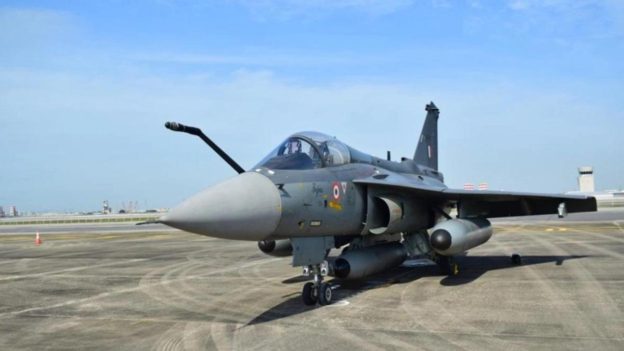Financial Express Online has reported earlier that the announcement is expected to be made following bilateral talks between Prime Minister Narendra Modi and the US President Joe Biden on June 22 in Washington DC.
General Electric (GE) plans to build jet engines for India’s military aircraft in India, and the Biden administration is all set to allow the company to set up its manufacturing base in India.
Financial Express Online has reported earlier that the announcement is expected to be made following bilateral talks between Prime Minister Narendra Modi and the US President Joe Biden on June 22 in Washington DC. While the particulars of the agreement have been negotiated, approval from the US Congress is still necessary.
State owned Hindustan Aeronautics Limited had previously announced its intention to use 414 GE-manufactured engines to produce military aircraft. New Delhi desires to transfer engine production technology to India.
The Pentagon announced on May 18 that joint production of jet engines, long-range artillery, and infantry combat vehicles between the US and India would substantially strengthen ties between the defence industries of Washington and New Delhi. The department noted that Deputy Secretary of Defence Kathleen Hicks met with Indian Defence Secretary Giridhar Aramane at the Pentagon the same day. They discussed the “priorities in strengthening the defence partnership” between the two nations and expanding “cooperation in the defence industry sector.”
Since 1986, India has had a strong desire to develop its own aircraft, complete with an indigenous aircraft engine. The indigenous ‘Kaveri’ engine did not meet the requirements, despite the fact that nine prototypes were created and a large amount of time and money was invested. As a result, the first indigenous fighter Tejas to be inducted into the Indian Air Force (IAF) in 2016 was outfitted with a GE F404 engine that had been purchased.
Nevertheless, the Tejas Mk 2, Twin Engine Deck based Fighter (TEDBF) and the Advanced Medium Combat Aircraft (AMCA) demand a higher thrust, and the GE-414 is capable of meeting this need. The F414 EPE aircraft engine that GE is currently building will include a new core, as well as a revised fan and compressor, which will result in a 20% boost in thrust, all the way up to 120KN. The AMCA effort can make use of this engine.
GE was awarded a contract in 2010 to supply 99 F414-INS6 engines with an option of 40 more as a follow-on order to power the Mk-2 LCA-Tejas. The Mk-2 LCA-Tejas has since evolved into the Medium Weight Fighter with an increased Maximum take-off weight of 17.5 tonnes, over which GE officials believe that additional 18kn Wet Thrust will be useful on the MWF after incremental growth in its payload and weapons capabilities after a redesign.
The General Electric F414-GE-400 is an afterburning turbofan engine of the 22,000-pound class. The engine has an axial compressor with three fan stages, seven high-pressure compressor stages, one high-pressure turbine stage and one low-pressure turbine stage. The F414-GE-400 weighs 2,445 pounds and has a thrust-to-weight ratio of 9. The F414 is one of the newest and most sophisticated aircraft engines in the US Navy. It combines advanced technology with the proven design of its predecessor, the F404, to provide the Boeing F/A-18E/F Super Hornet and the EA-18G Growler with an engine that is enduring, dependable, and simple to maintain. The F414 provides 35% more thrust than the original F404, considerably enhancing the aircraft’s range, payload, and survivability.
The India-specific GE-414 INS6 engine powered LCA Mk2 is scheduled to be unveiled by the Aeronautical Development Agency (ADA) at the beginning of next year and take to the skies by the end of 2024. GE-414 can also be upgraded if required in the future.
The F414-GE-INS6 model of the F414 family has the highest thrust and contains the most cutting-edge technology to fulfil the demanding specifications of India’s Air Force and Naval services. Examples of developments in technology include Full Authority Digital Electronic Control (FADEC) and extra single-engine safety features. F414-INS6 engines can generate 98kN Class of Wet Thrust.
The GE-414 engine will be manufactured with 70 to 100 per cent technology transfer (ToT). The ToT for manufacturing technology is anticipated, and General Electric holds intellectual property rights (IPR). It means India will need US approval to export the fighter jets with domestically produced GE engines.
With the Biden administration’s approval of GE’s ToT manufacture, the framework will be prepared for future cooperative design, development, and production between two nations of high-powered engines with thrusts of more than 110 kN.
Is China ahead?
China has built a new engine for its J-20 stealth fighter, which fixes issues like overheating of the blades, whereas India is still dependent on engine technology from the United States and other countries. The WS-15 engine has been under development for a number of years and boasts single-crystal turbine blades that are at the bleeding edge of technology. Images available in the public domain of the J-10CEs used by the Pakistan Air Force reveal that the aircraft are fitted with Chinese-made WS-10 engines. But now, thanks to the GE-414, Indian aircraft will be equipped with engines that are both more reliable and more fuel-efficient.
https://www.financialexpress.com/business/defence-thriving-forward-unleashing-the-power-of-ge-414-engines-for-superior-fighter-jets-and-indias-technological-rise-3135090/





